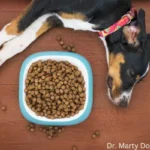Dogs at Risk for Nasal Mites

When it comes to our furry companions, even the tiniest intruder can cause a world of discomfort. One such microscopic nuisance can really throw things off, leading to a lot of sneezing, snorting, and overall misery. In this in-depth guide, we’ll explore what these tiny pests are, how they affect our four-legged buddies, how to spot the signs, and what can be done to manage and prevent future issues. Whether you’re just looking out for your best friend or simply curious, you’ll find everything you need to know right here.
What Are Nasal Mites?
These tiny critters, known scientifically as Pneumonyssoides caninum, like to hang out deep inside the nose and sinus area. Unlike other common parasites you might see crawling around, these ones are nearly invisible—barely measuring a millimeter in length. They settle in and feed on mucus and the inner lining, making things pretty uncomfortable for the one carrying them.
They can’t survive without a host, relying entirely on it for their needs. While they rarely trigger serious conditions, they often bring ongoing irritation and can lead to bigger problems if ignored.
How Do Dogs Get Nasal Mites?
They spread easily between animals of the same kind but don’t infect other species, including people (more on that in a bit). The usual ways they pass along include:
They can catch it through close snout-to-snout interaction with one that’s already carrying it.
Sharing toys, bowls, or bedding with an infected one can easily spread the problem.
Visiting places like parks, grooming salons, boarding facilities, or shelters increases the chance of catching them.
Since these tiny creatures are so small, they can easily be passed on without being noticed. When they sniff each other’s faces during greetings or playtime, they’re especially at risk.
Which Dogs Are at Risk?
Any canine can be affected, but some conditions make an infestation more likely:
Age
Middle-aged to older dogs tend to be more frequently diagnosed, though younger dogs aren’t immune.
Environment
Pets that frequent boarding facilities, parks, grooming salons, or shelters often face a greater chance of exposure because of their close contact with other animals.
Breed
Breeds with shorter nasal passages (e.g., Bulldogs, Pugs) may experience more severe symptoms, though all breeds can be affected.
Immune Health
Canines with compromised immune defenses are more susceptible to infestations and often experience more severe signs.
Signs Your Pet May Have Nasal Parasites
The symptoms of nasal mite infestation can range from mild to severe and are often mistaken for other respiratory or sinus-related illnesses. Here are some common signs:
1. Reverse Sneezing
A sudden, repeated snorting sound. It may seem alarming but is a common symptom of nasal irritation.
2. Frequent Sneezing
Your pet may experience frequent sneezing fits, sometimes forceful and repetitive.
3. Nasal Discharge
Clear, mucus-like discharge or even blood (epistaxis) may come from one or both nostrils.
4. Itching or Pawing at the Nose
Persistent scratching or rubbing the nose on furniture, rugs, or walls.
5. Loud Breathing or Snorting
Mite-related nasal irritation can cause your pet to breathe with louder, more labored sounds.
6. Facial Pain or Swelling
They may show signs of discomfort or even facial swelling in severe cases.
7. Head Shaking
A reaction to the irritation inside the nasal passages.
Complications from Untreated Nasal Mites
If left untreated, these tiny parasites can cause:
Chronic nasal inflammation (rhinitis)
Secondary bacterial infections
Nasal polyps or ulcers
Sinusitis
Long-term respiratory issues
Though rare, chronic cases may require more invasive treatments or even surgery to remove blockages or growths in the nasal cavity.
How Is This Condition Diagnosed?
Identifying these tiny parasites can be challenging because of their minuscule size and symptoms that resemble other breathing issues. Veterinarians typically follow a series of steps to make an accurate diagnosis:
1. Physical Exam
Your vet will examine the nose, face, and upper airway, and go over their symptoms and medical history.
2. Rhinoscopy
A small flexible camera is inserted into the nasal cavity under anesthesia to visualize mites or inflammation.
3. Nasal Swabs
Swabbing the nasal passage and examining the sample under a microscope to find the mites.
4. Nasal Flushing
A saline solution is flushed through the nasal passages, and the contents are analyzed for the presence of mites.
5. Imaging (X-rays or CT scans)
Useful to rule out tumors, polyps, or other obstructions that could cause similar symptoms.
Since many of the symptoms mimic those of allergies, infections, or tumors, accurate diagnosis is essential.

Effective Ways to Address Parasite Infestations in Canines
Once identified, this condition responds well to treatment. Using a mix of medication and proper care typically clears up the problem.
A. Antiparasitic Medications
Ivermectin
Milbemycin oxime
Selamectin (Revolution)
Moxidectin
These drugs are highly effective but must be prescribed and dosed by a vet, especially since breeds like Collies and Shelties can be sensitive to Ivermectin.
B. Antibiotics
Used if there is a secondary infection due to inflammation or open wounds in the nasal passages.
C. Anti-inflammatories
Corticosteroids may be used short-term to reduce swelling and discomfort.
D. Nasal Flushing
Done under anesthesia, this can physically remove mites and debris from the nasal cavity.
Note: Treatment is usually repeated after 2-3 weeks to ensure all life stages of the mites are eliminated.
Recovery and Follow-Up
Most pets bounce back completely within a few weeks after beginning treatment. Follow-up visits help confirm the problem is fully cleared. During this time:
Keep them separated from other pets.
Sanitize bedding, bowls, and toys
Monitor for recurrence of symptoms
If your furry friend is often around other pets, your vet might suggest a preventive antiparasitic treatment to keep them protected.
Can Humans Catch These Parasites from Their Pets?
The good news? No. These tiny parasites are species-specific. Pneumonyssoides caninum only infects them. There’s no evidence they can spread to humans or cats.
That said, if your pet is dealing with this issue, it’s still important to wash your hands after touching them and to keep them off your bed until the treatment is finished—just to be safe.
Prevention Tips for Pet Owners
Even though this condition can be managed, it’s always best to focus on prevention. Here are some ways to lower the chances of an infestation:
1. Avoid High-Risk Environments
Dog parks, shelters, or kennels with poor hygiene can be hotspots for transmission.
2. Disinfect Shared Items
Regularly wash bowls, toys, and bedding, especially after social gatherings or boarding stays.
3. Routine Vet Checks
Regular vet visits can catch infestations early and ensure ongoing health.
4. Use Preventative Parasite Control
Monthly parasite preventatives that include antiparasitic agents can help deter mites.
5. Monitor for Symptoms
Stay alert to early warning signs like reverse sneezing or nasal discharge.
Common Questions You Might Have About These Tiny Intruders
Q. How long do these tiny parasites survive inside their host?
These microscopic intruders can persist for several weeks inside the nasal passages. During this time, they don’t just stay put — they actively reproduce, laying eggs that hatch and continue the cycle. This ongoing presence is why infestations can become persistent and hard to resolve if left unchecked. Because they reproduce in situ, even if symptoms temporarily ease, the infestation may still be ongoing beneath the surface. This longevity underlines the importance of timely veterinary treatment to completely eliminate them before they cause more serious irritation or complications.
Q. Can these parasites cause nosebleeds?
Yes, they can. The constant irritation and scratching caused by these tiny creatures inflame and damage the delicate lining of the nasal passages. This inflammation sometimes leads to small blood vessels breaking, which results in bloody discharge or nosebleeds. This symptom often alarms pet owners because blood isn’t usually expected from a runny nose. The bleeding is a sign that the infestation has advanced beyond mild irritation and that medical intervention is definitely needed to prevent further tissue damage.
Q. Are these infestations common in the United States?
While they aren’t considered widespread or common, these parasites do exist in the U.S., though probably more frequently than reported. One reason for their apparent rarity is that they’re often underdiagnosed. Their symptoms—sneezing, nasal discharge, and irritation—can easily be mistaken for allergies, infections, or other respiratory issues. Because veterinarians may not always look specifically for these parasites, many cases go unnoticed or are treated symptomatically without identifying the underlying cause. Awareness is growing, so diagnosis is improving over time.
Q. Do these parasites produce any unpleasant odors?
On their own, these parasites don’t generate any odor. However, the irritation and damage they cause to the nasal lining can sometimes lead to secondary bacterial infections. These infections may produce foul-smelling discharge, which can be mistaken as a direct result of the parasites. So, if your pet’s nose has an unpleasant smell, it’s usually a sign of infection developing alongside the infestation. Treating both the parasites and any infections is essential to resolve all symptoms.
Q. Is it possible for a pet to carry these parasites without showing symptoms?
Yes, though it’s rare. Some pets can carry these parasites without obvious signs early on. These asymptomatic carriers can unknowingly spread the parasites to others during social interactions. It’s one reason why routine checkups and vigilance are important, especially for animals frequently exposed to other pets. Early infestation may not provoke enough irritation to cause noticeable symptoms, but the parasites are still present and reproducing.
Q. How should I clean my home and belongings after an infestation?
Cleaning thoroughly is key to preventing reinfestation and protecting other animals in the household. Start by washing all washable items that come into contact with your pet — such as bedding, blankets, collars, leashes, and toys — in hot water to kill any lingering parasites or eggs. For hard surfaces like floors, countertops, and furniture, use pet-safe disinfectants that effectively eliminate parasites without harming your furry friend. Don’t forget to vacuum carpets, rugs, upholstery, and even car interiors thoroughly, as microscopic eggs or larvae can hide in fibers. Regular cleaning and sanitation, combined with treatment, help ensure a full and lasting resolution.
Final Thoughts
They may be tiny, but the effect they have on your furry friend’s comfort and breathing is far from insignificant. Spotting the signs early and providing proper care can truly make a big difference for your beloved companion.
Whether your furry friend is sneezing nonstop or just seems off, don’t wait to see the vet. Catching it early and getting the right care can save them a lot of discomfort—and save you both time and money down the road.
As pet parents, it’s up to us to watch out for these tiny intruders. Stay vigilant and well-informed, and your furry friend will be breathing comfortably before you know it.



